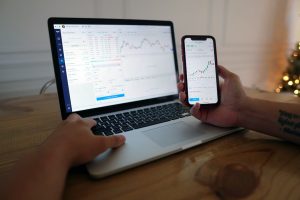Forex spreads refer to the difference between the bid and ask price of a currency pair. The spread is essentially the cost of trading and is influenced by various factors such as liquidity, volatility, and market conditions. However, traders often notice that forex spreads tend to go crazy at the end of the day, and this can impact their trading strategy and profitability. In this article, we will explore the reasons behind this phenomenon and how traders can navigate it successfully.
Liquidity
One of the primary reasons why forex spreads go crazy at the end of the day is liquidity. Liquidity refers to the ease with which a trader can enter or exit a trade at a given price. The forex market is the most liquid financial market in the world, with trillions of dollars traded every day. However, liquidity tends to dry up towards the end of the trading day as traders and institutions close their positions and prepare for the next day’s trading session. As a result, the bid-ask spread widens, making it more expensive to trade.
Volatility
Another reason why forex spreads go crazy at the end of the day is volatility. Volatility is the degree of fluctuation in a currency pair’s price over a given period. The forex market is notoriously volatile, with prices fluctuating rapidly in response to economic data releases, geopolitical events, and other market-moving factors. As the trading day nears its end, traders and institutions may try to take advantage of any last-minute price movements, leading to increased volatility and wider spreads.
Market Conditions
The forex market is open 24 hours a day, five days a week, with trading sessions overlapping in different time zones. As a result, market conditions can vary depending on the time of day and the region. For example, the Asian trading session tends to be less volatile than the European or US session, while the end of the US session can be particularly volatile as traders close their positions and prepare for the Asian session. These market conditions can impact forex spreads and make them go crazy at the end of the day.
How to Navigate End of Day Spreads
Navigating end of day spreads can be challenging, but there are several strategies that traders can use to minimize their impact on profitability. One approach is to avoid trading during the last hour of the trading day when liquidity tends to dry up and spreads widen. Instead, traders can focus on trading during the most liquid and volatile periods of the day, such as the opening of the European or US session.
Another strategy is to use limit orders to enter or exit trades. A limit order is an order to buy or sell a currency pair at a specific price or better. By using limit orders, traders can avoid the wider spreads that often occur at the end of the day and ensure that they get the best possible price for their trades.
Finally, it is essential to stay up to date with market news and events that can impact forex spreads. Economic data releases, geopolitical events, and central bank announcements can all impact market conditions and lead to wider spreads. By staying informed and adjusting their trading strategy accordingly, traders can navigate end of day spreads successfully.
Conclusion
Forex spreads can go crazy at the end of the day due to various factors such as liquidity, volatility, and market conditions. Understanding the reasons behind these wider spreads and implementing strategies to navigate them can help traders minimize their impact on profitability. By focusing on trading during the most liquid and volatile periods of the day, using limit orders, and staying informed about market news and events, traders can successfully navigate end of day spreads and achieve their trading goals.






